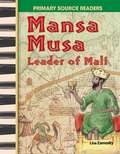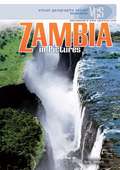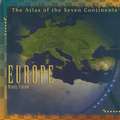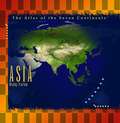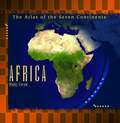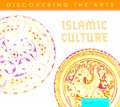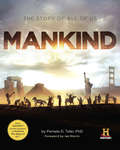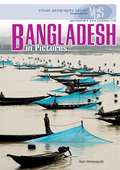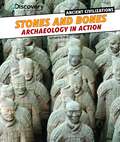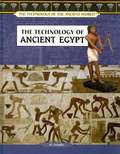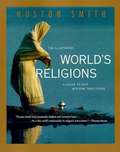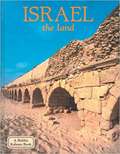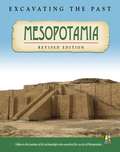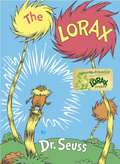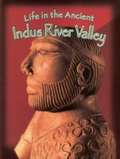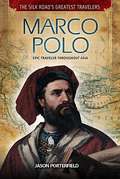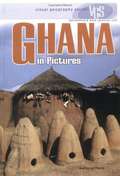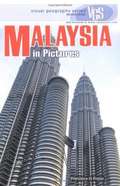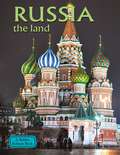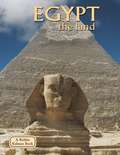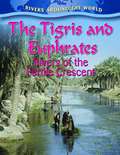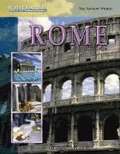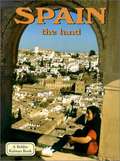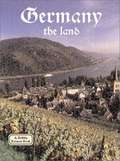Special Collections
District List: NYC Core Curriculum 6th - Social Studies
Description: The New York City Core Curriculum program aims to provide a high-quality curricula to NYC students through a seamless instructional program across grades and subjects. This list has been curated by NYCDOE for 6th Grade Social Studies materials. #nycdoe
- Table View
- List View
Mansa Musa
by Lisa ZamoskyMansa Musa was the king of Mali as it became one of the largest empires during the time of Musa's rule. Readers will discover the life of Mansa Musa in this appealing biography that uses vivid images, appealing maps, and stunning facts to engage children. A glossary and index work in conjunction with the easy-to-read text to teach readers about the Mali ruler, griots, Mali trade, Mecca, Malian religion, and other kings and queens
Zambia in Pictures
by Bella WatersDescribes the geography, climate, wildlife, natural resources, history, politics, culture, economy, and government of Zambia.
Europe
by Wendy VierowEurope, the second smallest continent on Earth, has 43 countries. Some geographers consider Europe part of a landmass that includes Asia, called Eurasia. Actually, it is a large peninsula, or mass of land that is surrounded on three sides by water. Europe s climate ranges from frozen tundra to warm Mediterranean. The first great civilization in Europe reached its height in Greece about 2,500 years ago. Since then, empires have risen and fallen in Europe. Today, many different ethnic groups call Europe home.
Asia
by Wendy VierowAtlas of the Seven Continents contains amazing continental maps and detailed information on population, beliefs, climate and vegetation, ecology and environment, economy, and politics and history. This is the best book for Geography class and for anyone who need information about any continent on Earth. Describes the continents in great detail!
Africa
by Wendy VierowAfrica is a continent of 53 countries and is home to people who make up more than 800 ethnic groups. More than 5,000 years ago, the country of Egypt, located in northern Africa, was one of the world s greatest civilizations. Africa is the land of the Sahara, the world s largest desert. It also hosts the Democratic Republic of Congo, which has one of the world s thickest rain forests. Many important natural resources, from exotic animals to precious minerals such as oils and diamonds, can be found in Africa.
Islamic Culture
by Atif ToorThis book describes Islamic art, from the building of the Dome of the Rock in Jerusalem in 691 to the work of Pakistani artist Shahzia Sikander, who expresses modern ideas in her miniature paintings.
Mankind
by Pamela D. TolerIt takes more than 10 billion years to create just the right conditions on one planet for life to begin. It takes another three billion years of evolving life forms until it finally happens, a primate super species emerges: mankind.
In conjunction with History Channel's hit television series by the same name, Mankind is a sweeping history of humans from the birth of the Earth and hunting antelope in Africa's Rift Valley to the present day with the completion of the Genome project and the birth of the seven billionth human. Like a Hollywood action movie, Mankind is a fast-moving, adventurous history of key events from each major historical epoch that directly affect us today such as the invention of iron, the beginning of Buddhism, the crucifixion of Jesus, the fall of Rome, the invention of the printing press, the Industrial Revolution, and the invention of the computer. With more than 300 color photographs and maps, Mankind is not only a visual overview of the broad story of civilization, but it also includes illustrated pop-out sidebars explaining distinctions between science and history, such as why there is 700 times more iron than bronze buried in the earth, why pepper is the only food we can taste with our skin, and how a wobble in the earth's axis helped bring down the Egyptian Empire. This is the most exciting and entertaining history of mankind ever produced.
Bangladesh
by Thomas StreissguthAn overview of Bangladesh's geography and history, along with an exploration of the political, economic, and cultural landscape of this country in South Asia.
Stones and Bones
by Kathryn SteeleDiscusses the work of archaeologists and describes the sites and artifacts they work with, including such things as ancient cities and burial grounds, temples, sunken ships, tools, and writing tablets.
The Technology of Ancient Egypt
by M. SolodkyStudents may have heard of papyrus and the pyramids, but this insightful book outlines many of the lesser known technological advancements that were the product of a fiercely creative, intelligent, and inventive ancient society. Covering such things as mummification and elaborate tombs, The Technology of Ancient Egypt is sure to keep students on the edge of their seats. Some scholars believe that more than half of the basic inventions on which today's world depends came from ancient China. The ancient Chinese made the first iron plows in the world and also invented the wheelbarrow, the seismograph, and many other invaluable things. Readers will learn about the many technologies that the Chinese created or improved upon. Supports history-social science content standards mandating student understanding of the origins and influence of agricultural, technological, and commercial developments in key ancient civilizations. Broadens student understanding of the relationship among science, technology, and society by highlighting how major scientific and mathematical discoveries and technological innovations have affected societies throughout history.
The Illustrated World's Religions
by Huston Smith"In detailed, absorbing, richly illustrated, and highly readable chapters on Hinduism, Buddhism, Confucianism, Taoism, Islam, Judaism, Christianity, and primal religions, we find refreshing and fascinating presentations of both the differences and similarities among worldwide religious traditions."
Israel
by Debbie SmithExplores the land and people that make up modern Israel. This work portrays the country and its changing boundaries. It includes topics such as: the hills and deserts in Israel; how food is grown and the land made fruitful in the desert; protecting the land; Ancient cities and Jerusalem; and sacred city to three major religions.
Mesopotamia
by Jane ShuterMesopotamia hides many wonders, waiting to be discovered when you see what it takes to excavate the past.
The Lorax
by SeussCelebrate nature with Dr. Seuss and the Lorax in this classic picture book about protecting the environment!
I am the Lorax. I speak for the trees.
Dr. Seuss’s beloved story teaches kids to speak up and stand up for those who can’t. With a recycling-friendly “Go Green” message, The Lorax allows young readers to experience the beauty of the Truffula Trees and the danger of taking our earth for granted, all in a story that is timely, playful, and hopeful. The book’s final pages teach us that just one small seed, or one small child, can make a difference.
Life In The Ancient Indus River Valley (Peoples of the Ancient World)
by Hazel Richardson5000 years ago, people built the Harappa city in the Indus valley with clay clad walls, sewage system and trade records! The book is a timeline from the Harappan civilization to Aryans to Mauryas and Guptas.
Marco Polo
by Jason PorterfieldUpon returning to his native Venice from a nearly 25-year journey through Asia, Marco Polo fueled the Western imagination with his tales about the splendors of the East. This lively biography follows Marco’s intrepid family as they navigate the spice stalls, caravansaries, and dangers that once populated the Silk Road and enter Kublai Khan’s Mongol court in China, where they served as advisors. Readers will learn about the Polos’ importance as cultural emissaries at a time of limited global exchange and how Marco’s account of their travels—whether fact or fiction—heralded the later golden age of exploration.
Ghana In Pictures
by Yvette La PierreIntroduces through text and photographs the land, history, government, people, and economy of Ghana.
Malaysia in Pictures
by Francesca Di PiazzaIntroduces the geography, history, religious beliefs, government, and people of Malaysia.
Russia
by Greg NicklesDiscusses Russia's geography, history, ethnic groups, wildlife, climate, cities, economy, agriculture, transportation, and space program.
Egypt
by Arlene MoscovitchEgypt is a land of timeless monuments and artifacts. It is also a land marked by the changes brought by the modern world; where camel drivers talk on cell phones and ancient tombs are moved to make way for modern dam building projects. With photographs, this work addresses the problems of pollution, global warming, and erosion on the land.
The Tigris And Euphrates
by Gary MillerThe Tigris and Euphrates rivers surround a region once known as Mesopotamia, the "cradle" of ancient civilizations that included Sumer, Babylonia, and Assyria. This fascinating book follows both rivers from where they begin in Turkey, travel down through northern Syria and Iraq, and join to form the Shatt al Arab before emptying into the Persian Gulf.
Spain
by Noa Lior and Tara SteeleExplores Spain's varied geography from the Cantabrian Mountains in the north to the southern Sierras and the vast rivers and coastal regions of the Atlantic and Mediterranean.
Germany the Land
by Kathryn LaneIntroduces the geography, cities, transportation, economy, and wildlife of Germany.
